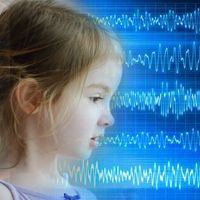Brain Waves Could Classify Autism Severity
The earlier autism could be diagnosed the more likely children could be helped. Currently that is done mostly by assessing a child's behavior. The search for a reliable quantitative measurement that could both identify the condition and its severity may have gotten a boost from researchers at Albert Einstein College of Medicine, Bronx, NY. The technique could also help clinicians or researchers see if a therapy is working.

The earlier autism spectrum disorder (ASD) could be diagnosed the more likely children will be helped.
Currently the diagnosis is made mostly by assessing a child’s behavior.
The search for a reliable quantitative measurement that could both identify the condition and its severity may have gotten a boost from researchers at Albert Einstein College of Medicine, Bronx, NY. There a team led by Sophie Molholm, PhD, has found that EEG recordings may offer a way of determining how severe a child’s autism is, and eventually, whether a particular therapy is helping that child.
The goals of the research are “early identification of children at high risk before behavioral symptoms emerge” as well as “using biomarkers to assess efficacy of treatment,” Molholm said.Efficacy can pose an economic issue for parents, she added. She has seen cases where desperate parents tried expensive but ineffective alternative medical treatments like chelation therapy, she said.
An effective testing mechanism for ASD could also help researchers and clinicians identify subtypes of conditions and determine where a patient might be placed along the autism spectrum.
In their recent project, described in the Journal of Autism and Developmental Disorders, the researchers used EEGs to see how quickly 43 children with autism spectrum disorder (ASD) were able to process stimuli. The test subjects, ages 6 to 17, were connected to EEG recorders using 70 sensors attached to a close-fitting cloth hood.
The children sat in front of a monitor which would either flash a red circle, emit a tone, or do both at the same time. They pushed a button each time they realized that—a sign that their brains had processed the information.The researchers then looked at their EEG records to see how long it took for a child to respond.
They found that compared to children with no signs of ASD, the children in the study took longer to recognize the tone, very slightly more time to recognize the combined red circle and tone, and showed no difference in recognizing the red circle that was the visual stimulus in the experiment.
“This is a first step toward developing a biomarker of autism severity—an objective way to assess someone’s place on the ASD spectrum,” Molhom said in an interview on the school’s website. Future studies planned include designing a training program to help children speed up their processing times. Ideally that would be a video-game format, she said, something that would engage these children and be fun—particularly for adolescents with ASD.
The research was funded by the US National Institute of Mental Health. The proposal was called “Sensory Processing and Integration in Autism".